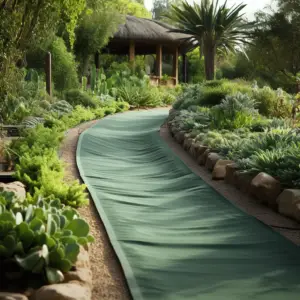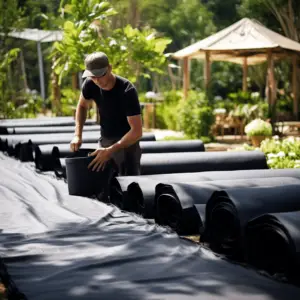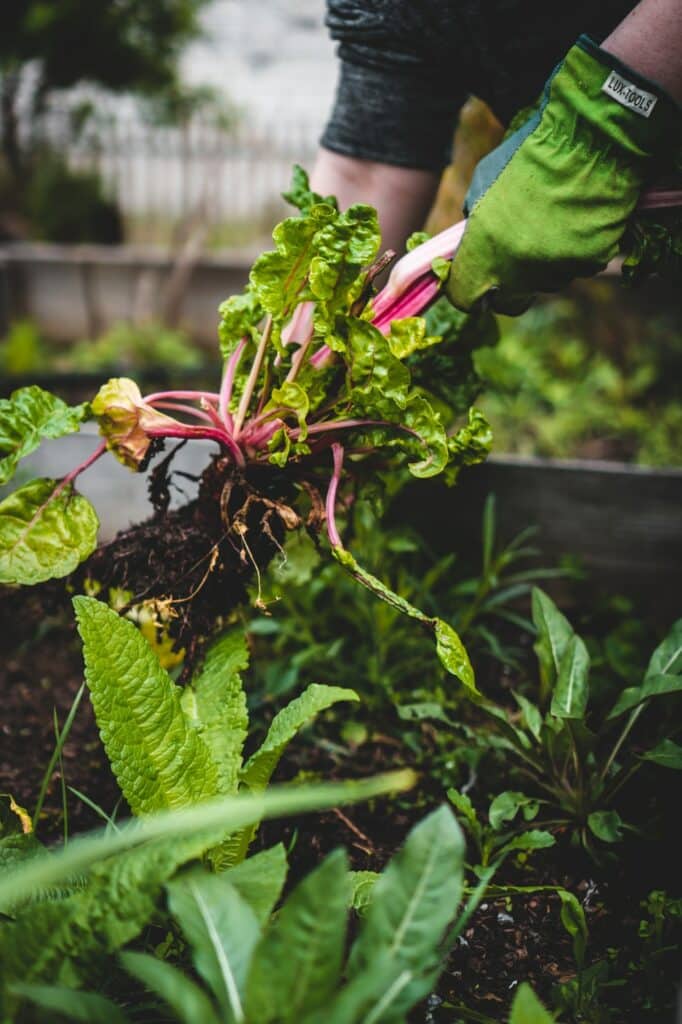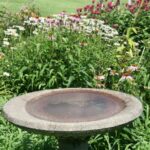Whether you have been gardening for years or are new to it, you may have come across some rolls of landscape fabric at gardening centers or DIY stores. If you were intrigued after seeing such fabric, keep reading this article to the last word. You will get to know what the landscape fabric is and why you need it or not.
You probably would not want to spend your weekend digging or pulling weeds out of your flowerbed or garden. Instead, it would help if you were having to enjoy happy moments with your family and friends in your backyard. Notably, there are many weed control strategies. However, the use of landscape fabric tops the list simply because it does not involve potentially harmful chemicals to eliminate or prevent unwanted plants. Is it ideal for a vegetable garden? First, find out what it is and its pros and cons to help you come up with an informed answer.
Table of Contents
What is Landscape Fabric?

Landscape fabric is a solid sheet with strategically perforated holes to let rainwater soak through to the ground. Some landscape fabric brands provide UV protection to help give it a longer lifespan. Typically, you can get this fabric in rolls at least 3 feet wide and 50 to 200 feet or even longer. The cost of the fabric depends on the brand and its thickness. It is bought alongside landscape pins for installing it. For your information, you can cover it with any mulch. Be it gravel, rubber nuggets, wood chips, etc.
Effects of Landscape Fabric
Most experts say that the best area to install landscaping fabric is around trees and shrubs, where you can even top it with mulch to last for many years. This method does not work well for vegetable gardens that require continual land preparation and cultivation, as it requires staying in one place for years.
Keeps Away Debris and Inorganic Mulches
Inorganic mulches and rocks should not settle into the soil. You can prevent that by using the landscape fabric. Note that the shredded recycled rubber and small rocks are purposely placed on the ground for aesthetics. They do not decompose like organic mulch such as leaves. Thus, using the fabric prevents the rocks and shredded rubber from sinking into the soil. But prevent organic mulch from natural decomposition.
It Prevents Weed Seeds From Sprouting
If you place it on top of the weed seeds, they will not germinate. Note that the seeds need moisture while the seedlings will require sunlight and air. Thus, even if the seeds get slight warmth, they will eventually die because they cannot reach the sun’s rays.
Limits the use of Weed Control Chemicals
If you install landscape fabric today, you will not need to buy expensive weed management chemicals. Therefore, your landscape will be free from potentially harmful herbicides. Kids and pets can play around your home without the fear of weed control chemicals.
Reduces Evaporation
Landscape fabric helps reduce evaporation, thus retaining soil moisture. Wind and sun are the main culprits behind evaporation. Having the fabric on the soil will prevent the soil from evaporating. It will keep both the sun and the wind at bay.
It Offers a Soil Erosion Solution
In sloppy areas, it can be difficult to come up with an effective soil erosion management strategy. But when you use the landscape fabric, the sloppy area will not experience any form of erosion. It will allow moisture to seep through the perforated holes, but the upper soil surface will not be washed away by runoff water.
Why do some homeowners reject the use of landscape fabric despite its numerous benefits? This section explores the possible cons that could lead to that. These are the benefits associated with the installation of landscape fabric:
The Fabric Discourages the Existence of Earthworms
Note that earthworms help to aerate the soil. If they cannot access the ground, they will probably not aerate it. That is why many homeowners do not prefer using landscape fabric. If they use it, the land will remain compact and not friendly for growing any plants.
Prevents Nutrient Replenishment Through Natural Mulch
When leaves fall from the trees, they should decompose and replenish nutrients in the soil. But when they come across the barrier, they cannot even reach the ground to rot. Without the landscape fabric, the leaves could naturally decompose to add nutrients to the soil.
Weed Seeds Can Still Sprout
If there is mulch covering the fabric, weed seeds can sprout on it. In addition, their roots can find their way through the fabric perforations into the ground. If this happens, it would be challenging to remove the weeds without pulling up the fabric. Typically, this would occur if you use organic mulch such as wood chips which eventually decomposes to create a growth medium on the fabric.
It Can be Expensive
The best landscape fabric that is reasonably thicker than the usual cloth is quite expensive. It has UV blockers that help delay decomposition from UV rays. Due to its quality, it retails at high prices that would add to the landscape budget.
Reseeding is Almost Impossible

Some landscapers and gardeners like to allow plants to reseed and spread across a large area naturally. However, using the fabric prevents reseeding. It is impossible for seeds to penetrate into the holes to obtain moisture and other requirements for growth. Thus, the seeds eventually fail to sprout.
It is Hard to Remove
The fabric is covered with rocks and rubber once it is installed. Thus, whenever you want to remove it, you will have to rake away the stones so that you can remove them. This means you may have to hire someone to do it for you since it is demanding.
Conclusion
Landscape fabric has numerous benefits that you can leverage once you install it. However, you will have to forget some gardening methods such as natural reseeding, soil aeration by earthworms, and the replenishing of nutrients. Learn that it has benefits and drawbacks to contrast. Lastly, note that it is not ideal for use in vegetable gardens.


